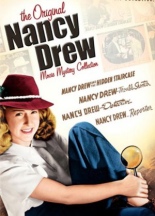
 Being the most pure mystery of the bunch, Nancy Drew and the Hidden Staircase is arguably the most enjoyable entry of the four-film franchise, even if the leads’ antics are entirely rote by now. The important thing is, they still amuse, and go out on a high note. It’s kind of a shame there weren’t more.
Being the most pure mystery of the bunch, Nancy Drew and the Hidden Staircase is arguably the most enjoyable entry of the four-film franchise, even if the leads’ antics are entirely rote by now. The important thing is, they still amuse, and go out on a high note. It’s kind of a shame there weren’t more.
In this adventure, two sister spinsters announce plans to donate their estate to a children’s hospital. The catch is their father once upon a time designated they must live in it every night for 20 consecutive years, and now, they have roughly two weeks to go. When their chauffeur turns up dead, it’s obvious to us someone’s trying to scare them away by murdering the man and, thus, foil the old maids’ good intentions.
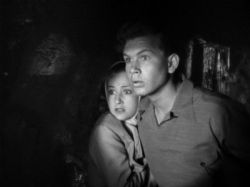 To the loony, incompetent authorities, however, led by Capt. Tweedy (Frank Orth, The Lost Weekend), it’s a long jump to a conclusion of suicide. Luckily, Nancy (Bonita Granville) and platonic pal Ted (Frankie Thomas, whose lower register suggests dropped testicles post-Nancy Drew … Trouble Shooter) appear on the crime scene to fiddle with pieces of evidence and plant a false one. Oh, kids!
To the loony, incompetent authorities, however, led by Capt. Tweedy (Frank Orth, The Lost Weekend), it’s a long jump to a conclusion of suicide. Luckily, Nancy (Bonita Granville) and platonic pal Ted (Frankie Thomas, whose lower register suggests dropped testicles post-Nancy Drew … Trouble Shooter) appear on the crime scene to fiddle with pieces of evidence and plant a false one. Oh, kids!
When Nancy learns the twist — the one we get from the start because, oh, y’know, it’s in the title — she exclaims, “Boy, isn’t this a pancake!” And that sums up the clean-behind-the-ears appeal of this picture, strengthened by anachronistic plot devices as ice delivery and telegrams. At an hour long, Staircase is hardly taxing. To borrow another two dated exclamations that could sub as a review, “Swell!” and “Hot diggity!” —Rod Lott

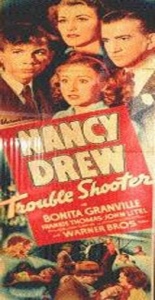
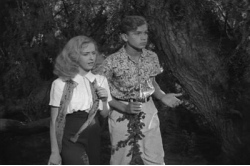
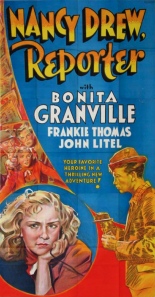
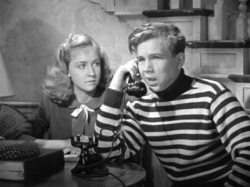 The second of the four-film series proves as frothy and accessible as the first, if you can get past the Asian stereotype who pops up at a Chinese restaurant where Nancy and friends are short by 65 cents. Thus, she, Ted (Frankie Thomas, whose character is suddenly no longer named Ned), Ted’s little sister and her pal Killer literally sing for their supper, and the crowd digs Killer’s killer Donald Duck impression.
The second of the four-film series proves as frothy and accessible as the first, if you can get past the Asian stereotype who pops up at a Chinese restaurant where Nancy and friends are short by 65 cents. Thus, she, Ted (Frankie Thomas, whose character is suddenly no longer named Ned), Ted’s little sister and her pal Killer literally sing for their supper, and the crowd digs Killer’s killer Donald Duck impression. 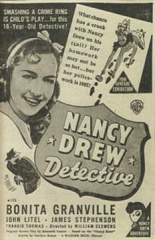
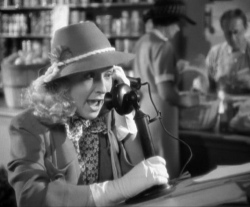 In the climax, Nancy threatens the bad guys with a gun, holding it with disgust as if it were a penis.
In the climax, Nancy threatens the bad guys with a gun, holding it with disgust as if it were a penis. 
 Along the way, the group faces sharks on a ocean voyage, an island rife with hungry wolves, and a castle filled with labyrinthian tunnels, through which they’re pursued by phantom-masked henchmen. It’s cute, enjoyable and better than your average anime, for which director Masakazu Hashimoto has been responsible in the past.
Along the way, the group faces sharks on a ocean voyage, an island rife with hungry wolves, and a castle filled with labyrinthian tunnels, through which they’re pursued by phantom-masked henchmen. It’s cute, enjoyable and better than your average anime, for which director Masakazu Hashimoto has been responsible in the past.